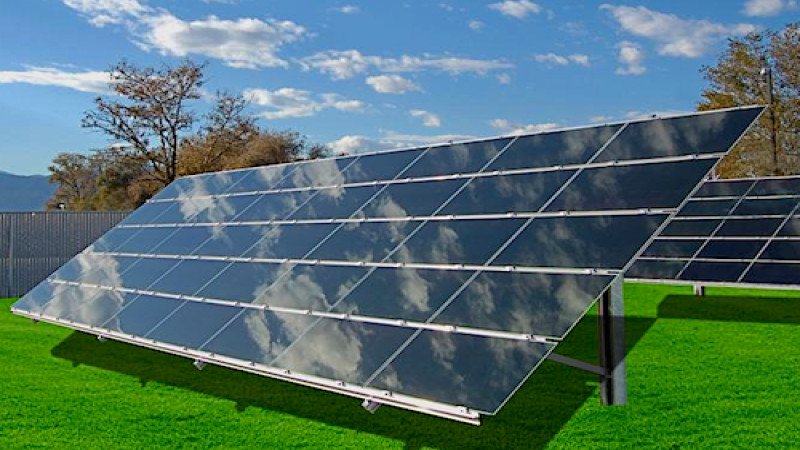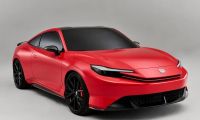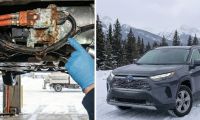There is clean, and then there is clean. Clean is such an over rated word when it comes down to energy and transportation. In fact, there is no such thing as clean energy in general, at least not in this lifetime with the current state of technology. Don’t believe me? Take these few points into.
Breathing, A Pollution Point. You and I have one thing in common, we breathe. What this means is that we expulse carbon dioxide from our lungs every time we let air out. This, in and of itself is a form of pollution and there is nothing we can do about it.
When we think of clean alternative and renewable energy sources, we usually think of solar, wind, hydro and geo-thermal, to take the main ones out there. Nonetheless, in order to get any electricity out of any of these systems we need to manufacture the devices, which pollutes. On top of it, humans design and build them, the same bodies that breath out carbon dioxide. See where we’re going with this? Even the best rated efficient toaster can pollute depending on its manufacturing, especially if its energy source is dirty.
An electric toaster or an electric vehicle, EV built in an industrial part of a country where pollution standards are slim will always pollute more than a gas car built in the cleanest country, as long as its engine isn’t used.
Electric Utilities Continuously Produce Electricity. Another lesser-known fact is that when a utility needs to have more electricity for peak time, they fire up a power station. That power station runs at 100% of its capacity, period. In other words, you cannot fire it up, especially in the case of coal-powered station to only crank out 25% of its capacity. It’s all or nothing, which makes the pollution equation very tricky to determine. Whether you recharge you EV or use your toaster today, tonight or next week, that same coal powered plant will still run at 100% capacity during peak time, regardless of your actual energy usage.
What Do We Mean By Clean? So indeed, what does clean energy mean in the end? This leaves us with a few limited alternatives and definitions. We need to explore the least polluting solutions that efficiently furnish electricity, using the least polluting way of manufacturing such energy devices and the least polluting automobile platform in order to rate what would be a clean energy system. We’re used to dirty energy and have desensitized over the decades. While there are no simple solutions to this dilemma, one thing is for sure, don’t discard the human mind’s incredible ingenuity and ability to find solutions to the seemingly toughest problems. Case in point, in the past few decades we broke innovative barriers we once thought impossible to do. We broke the sound barrier with an airplanes that barely survived the stress. We sent people to the moon with a computer less powerful than a modern current entry-level calculator. We even cracked atoms and created energy, all within one century of intense innovations after discovering that steam expands and could harnessed into energy. If you believe we were sandal-wearing nomads only a few millennia ago, then we’ve come very, very far in a short amount of time.
Tidal wave and other hydro energy is probably the best and cleanest renewable alternative energy. It is plentiful, doesn’t depending on the time of day as solar and wind does. If it isn’t accessible to all, there are always rivers nearby. A coherent energy solution would seem to point at different energy sources using natural habitat resources. Already some carmakers have shown ways to offset their carbon footprint buy “greening” their acts. 3D printers are already shaping silicate compounds into useable products. In other words, we have signs of a cleaner future and our ingenuity will come through as it always has.
There is very little doubt we will quickly find solutions that will yield the greatest energy source, polluting the least amount by using the cleanest manufacturing. With some effort, innovative thinking and forward looking minds, as long as we don’t come to a grinding halt at the first signs of trouble, we will continue to find solutions. Clean energy is all around us, we need to focus on clean ways of manufacturing.











Comments
An excellent overview of a
Permalink
An excellent overview of a very complex problem with the positive suggestion that problems have solutions and we are highly capable of finding them. There is more than one way of clearing the air and you've hit upon more than one of them in more than one way.
Thank you Don indeed, we can
Permalink
In reply to An excellent overview of a by Don Bain
Thank you Don indeed, we can either sit and complain or do something about it!
Some good points, and you may
Permalink
Some good points, and you may have been misinformed. Most coal (and natural gas) plants are not "all or nothing" with respect to power adjustably. Most coal plants can and often do run at a fraction of their rated power output. To adjust the power output is not instant, it takes several minutes or even a couple hours to make large changes in the power output. To operate at half power, just slow down the amount of coal entering the burner to half as much, and then as the burner cools reduce the water flow to half as much to keep the steam at the ideal temperature (and allow the turbines to producing half as much torque at their constant speed). Coal plant operators must anticipate energy demand to operate as efficiently as possible. A nuke plant is much more "all or nothing" -- the fuel is decaying all the time even if the energy cannot be used -- this is also a characteristic of wind and solar power -- use it or lose it (unless there is a way to store the energy produced during times of low demand). A hydro-electric plant with a large storage reservoir behind a dam is able to respond to increases in power demand almost instantly, and to store the energy during times of low demand.
Hi Daryl, yes it makes more
Permalink
In reply to Some good points, and you may by Daryl Oster (not verified)
Hi Daryl, yes it makes more sense and I never understood why the people I spoke to at my local utility said that. I assume we have invented the carburetor and throttle principle a long time ago.
Maybe there is life after all for the short life of hydrogen in the volatile burst energy market.
Thanks for your comment, Nicolas